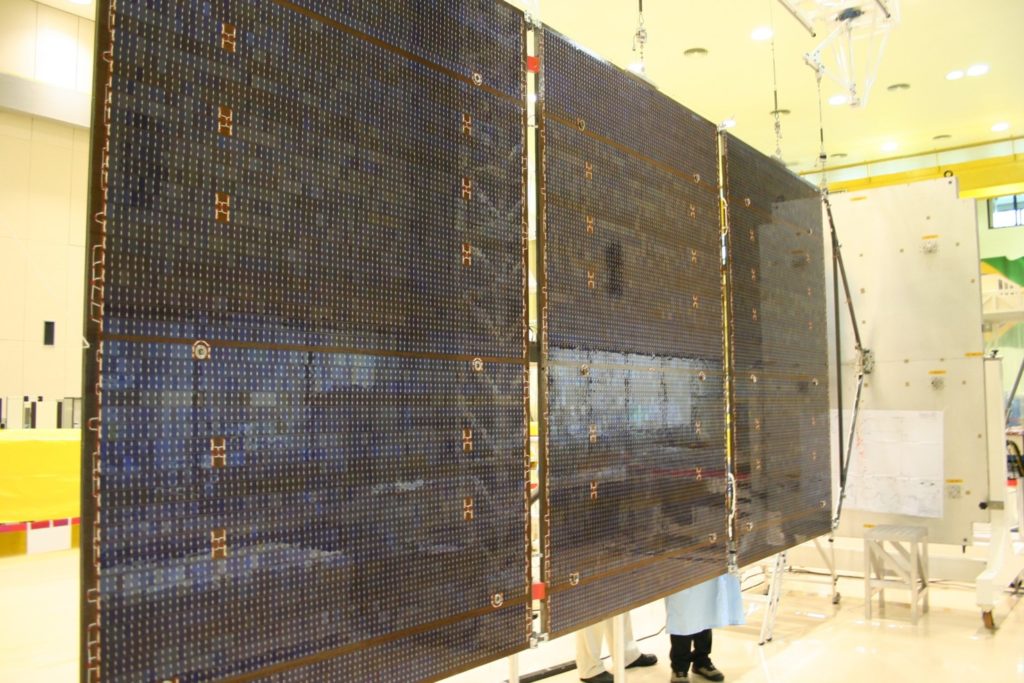CBERS 2B in Orbit

Photo: Disclosure
By Thiago Romero
Agência FAPESP – A Brazilian company managed to include the country in the group of producers of solar panels for aerospace applications, a select club that includes only France, Germany, Japan, Russia, China and the United States.
Orbital Engenharia, based in São José dos Campos (SP), is responsible for the production of three panels that make up the Sino-Brazilian Earth Resources Satellite (Cbers-2B), built by the National Institute for Space Research (Inpe) and the Chinese Academy of Space Technology, scheduled to launch in September from China.
“For the first time, the solar panels for the Cbers program were manufactured in Brazil. Until then, they were imported from Germany,” mechanical engineer Célio Costa Vaz, director of Orbital, told Agência FAPESP. “The panels passed all Inpe acceptance tests and were installed on the satellite, which is already in China in the launch campaign.”
Also known as photovoltaic generators, the panels capture solar radiation and convert it into electricity. While part of the electrical energy produced directly powers the satellite, the other is stored in batteries for use while it is located in the shadow cones projected by the Earth.
Vaz, who worked as a solar panel designer for 18 years at Inpe before founding Orbital Engenharia in 2001 – with research supported by FAPESP’s Technological Innovation in Small Businesses Program (PIPE) – explains that the panels are made up of series connection of thousands of Solar Cell Assembly (SCA), units made up of three components: solar cell, interconnector and cover glass.
The solar cell is responsible for capturing sunlight, while the interconnector makes electrical contact between the cells using tiny silver particles. The protective cover, which is made of glass, protects the cells from space radiation. For the three Cbers-2B panels, 16 thousand SCAs were used.
“To manufacture the SCAs, we use two components, the solar cell and the cover glass, which are still imported, and the interconnector, which we already manufacture in the country. The great innovation, however, lies in the design and creation of all the equipment and devices that allow us to unite these three components and assemble the panels in Brazil”, said Vaz.
Space responsibility
CBERS satellites are used for terrestrial imaging. The images generated by the most recent example in the series, CBERS-2, in operation since 2003, have applications in controlling deforestation and fires, monitoring water resources and analyzing agricultural areas, urban growth or land occupation. CBERS-2B has three cameras on board and should guarantee the provision of images that began with CBERS-1 in 1999.
Orbital Engenharia is also responsible for the design and manufacture of solar panels for Inpe’s Multimission Platform (PMM). “The structural model of the panels, used for environmental qualification tests, was delivered to the institute at the end of last year. In the second half of this year, we should start manufacturing the flight models, that is, the solar panels that will be in orbit with PMM”, explained Vaz.
The Multimission Platform, which will serve as support for different scientific and Earth observation satellites, is scheduled to be launched in 2009. For comparison purposes, if the satellites were composed of two modules – one for service and the other for payload –, the PMM would house only a large service module to provide power to other satellites.
“Foreign exchange savings, generation of new local jobs and technological independence would be the three great advantages of national manufacturing of solar panels. We have savings per unit that range from 15% to 25% when panel manufacturing services are carried out in Brazil” , highlighted Vaz.
Agency FAPESP – https://agencia.fapesp.br/solucao-em-orbita/7171/

